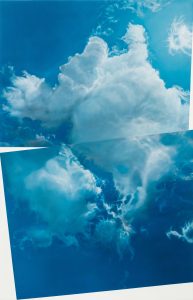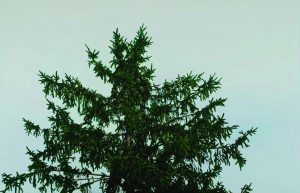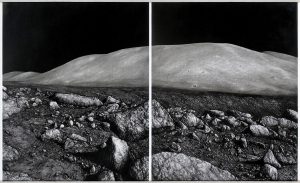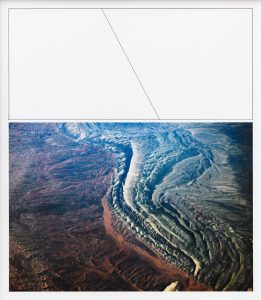
Milyen az a művészet, ami a Nietzsche-i Jón és Gonoszon túl történik? Hogy néz ki az a kortárs művészet, ami nem a kognitív és az emocionális, hanem ontológiai rétegeinket célozza meg? Régóta adós vagyok azzal, hogy iski Kocsis Tibor munkáiba bepillantást adjak itt az oldalon. Majd’ 10 éve írtam Tibor katalógusához egy szöveget, most pedig egy cikkem jelent meg róla. Tibor régebbi és újabb munkáiban egyaránt nem kevesebbet, mint (a művészet és) a létezés Nagy Kérdésé(ei)t boncolgatja.
How does art that takes place beyond the Nietzsche-ian Good and Evil look like? How does contemporary art that does not target the cognitive or the emotional, but rather the ontological realm operate? I meant to introduce the art of Tibor iski Kocsis for sometime. It is interesting that I have written a text about him almost ten years ago, and now I published an article and in both cases I realize that Tibor in his art aims to explore not less than the Great Question(s) (of art and) existence.
Anno ezt írtam róla:
„A művek témája…? Ontológiai. Az ontológia a metafizikának az az ága, mely a lét és nem-lét kérdéskörével foglalkozik. Mit jelent az, hogy valami létezik? Mit jelent az, hogy jelen lenni? Ha valami létezik és jelen van, az arra utal, hogy tőlünk, nézőtől függetlenül a világban megtalálható. A filozófia egyik kihívása, hogy megfejtse: képesek vagyunk-e szubjektív függöny nélkül szemlélni a dolgok valóságát, elérhet-e a puszta (Kant-i) noumenon a befogadóhoz, vagy örökre megragadunk a jelentések hálójában, ahol minden igazság relatív? Vajon a Heidegger által megragadott das Seiende, jelenvalólét valóban átélhető és gyakorolható? Heidegger megkülönböztet das Seiende és Dasein között. Az első a tiszta lét fogalma, míg a második a világban való relációs létre utal. Az első esetben lehetséges a jelenlét, míg a másodikban jelentések sokasága vesz körül minket és a jelenlét a jelentések szűrőjén keresztül ér el hozzánk. Ebben a második esetben, ami a hétköznapokban való létezésünkre jellemző, az ember egyszerre van jelen is meg nem is. Ugyanakkor sem a filozófiát, sem a művészetet nem hagyja nyugodni a gondolat, hogy vajon mi van a szubjektív valóság mögötti világban? Van olyan? És mi a helyzet a nem-létezéssel? Van olyan, hogy „nincs”?”
„The subject of the works…? Ontological. Ontology is the branch of metaphysics that deals with the questions surrounding existence and non-existence. What does it mean for something to exist? What does it mean to be present? If something exists and is present, that alludes to the fact that it can be found in the world independent of us, of the viewer. One of the challenges of philosophy is to resolve whether we are capable of considering the reality of things without a subjective curtain, whether the pure noumenon can reach the recipient, or if we get caught eternally in the web of meanings, where every truth is relative? Is the das Seiende, present existence, as apprehended by Heidegger truly experienceable and practicable? Heidegger distinguishes between das Seiende and Dasein. The former is the notion of pure existence, while the latter refers to existence related to the world. In the first case, presence is possible, while in the second, we are encompassed by a myriad of presences, and presence reaches us by way of a filter of meanings. In this second case, which is characteristic of our everyday existence, one is simultaneously present and not present. At the same time, neither philosophy, nor art leaves our mind at rest with the thought of just what there is in the world behind subjective reality. Is there such a thing? And what about non-existence? Is there such a thing as “not existing”?”


Az ezüstből készült Fenyőág (2009), amely ezüstbe mártott valódi fenyő, „úgy viszi tovább a lét és nem-lét gondolatát, hogy közben szimbolikus tartalmak felfejtésére inspirál. Az ezüst a Hold színe, a női energia „megfelelője”, de ugyanakkor az elmúlással, az átmenetiséggel is kapcsolatot tart. Ahhoz, hogy a szobor létrejöjjön, a Fenyőág öntése közben – mely egy valódi fenyőág kiöntött mása – az ág belehal, beleég az ezüstbe, s ezzel örökkön létezővé alakul át. Létezik is, meg nem is.”
„Pine Bough (2009), made in silver, carries further the notion of existence and non-existence, in such a way that one cannot avoid deciphering its symbolic content. Silver is the colour of the Moon, “corresponding” to female energy, but at the same time maintaining a relation to passing and provisionality. In order for the sculpture to be realised, during the casting of the Pine Bough – which is the cast copy of a real pine branch – the bough dies in, is burned in the silver, and with this, is transformed into eternal existence. It exists, and yet it does not.”

„… a nagyméretű Vesuvius I-III (2010) … egy pontosan megrajzolt tájkép (ami egyébként a Vezúv kráterének a széle egy „turista” szemszögéből, azért ennyire precíz) … távolról fekete-fehér fotónak tűnik. Csak közelről vesszük észre, hogy egy végtelenül pontosan megrajzolt óriási triptichon előtt állunk.” „… a Vesuvius egy köztes, lét-és nem-lét közötti térben lebeg. Nincsen mögötte ég, csak óriási kopasz sziklákat látunk, ahol a növényzet is lassan a kőzethez szürkül, idomul. A természet ereje és magánya, időtlensége és ősisége egyaránt megjelennek ezen a rajzon.”
„…Vesuvius I-III (2010) …the precisely drawn landscape, a detail of Mount Vesuvius (that is the edge of the crater of the volcano from the perspective of a tourist) appears as a black-and-white photo from a distance. Only from up close do we realise that we are standing before an infinitely precisely drawn enormous triptych. At the same time, Vesuvius … here, floats in a … transitory space, between existence and non-existence. There is no sky behind it; we see only enormous bar cliffs, where the vegetation also slowly becomes grey and conforms to the rocks. Nature’s power and solitude, timelessness and primordiality, appear in this drawing.”

A Luna sorozatból:

A mostani kiállításról a szöveg: A ítélkezésmentes találkozás varázsa.

Ismét egy elgondolkodtató, szép írás egy nagyszerű művészről. Gratula!🥂
Nagyon köszönjük!
Sokat foglalkozom mostanában transzgenerációs családi történetekkel. Az ezüstbe beleégett fenyő fájón-gyönyörűn idézi 2 nagyszülőmet. Köszönet iski Kocsis Tibor köszönet Ground zero :))
Milyen igaz, így nézve is milyen szép szimbólum.
köszönöm az írást, szeretem a munkáit, okoznak sok meglepetést 🙂